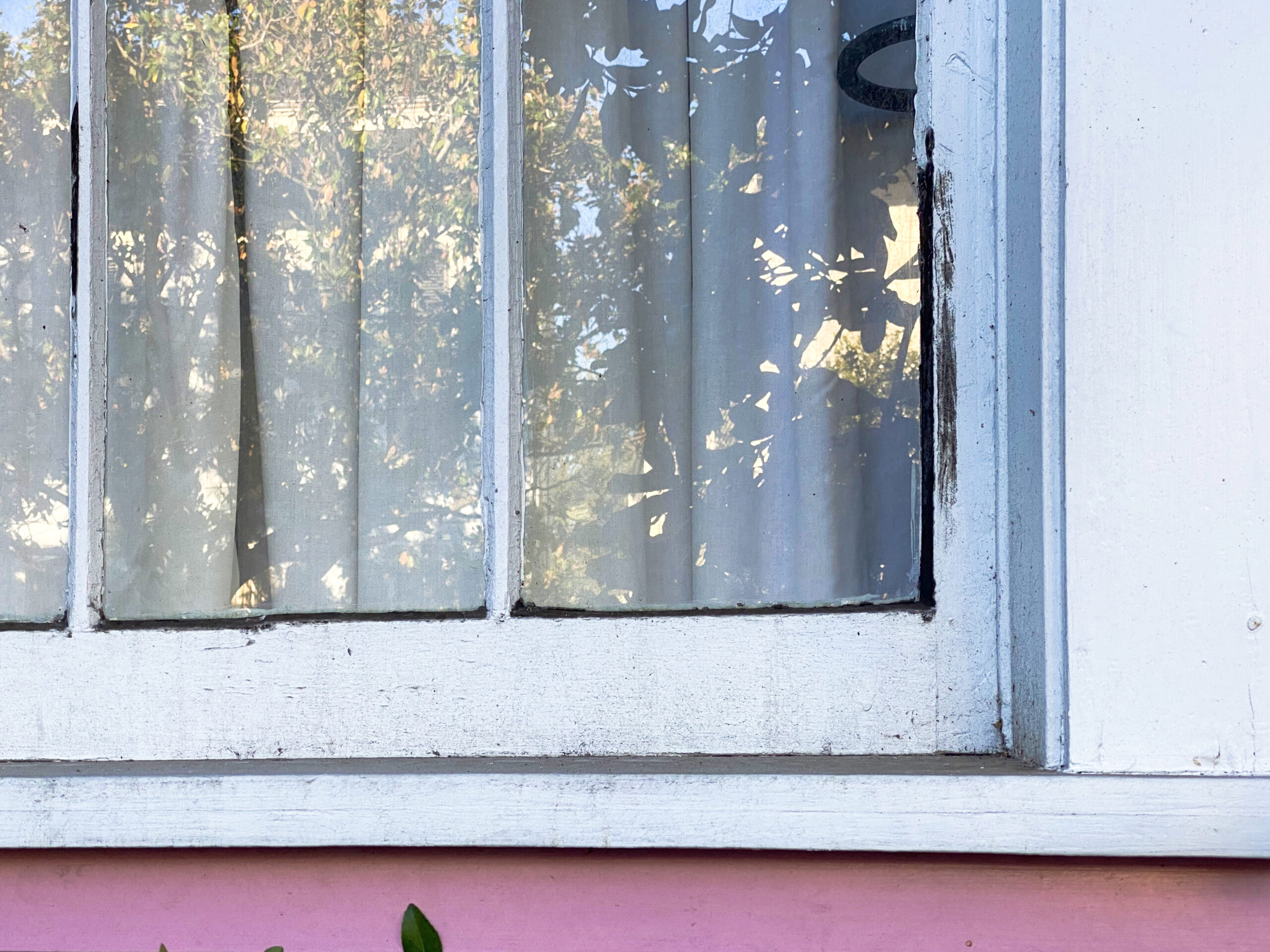This story appeared in the October issue of PRC’s Preservation in Print magazine. Interested in getting more preservation stories like this delivered to your door? Become a member of the PRC for a subscription!
Ask the Expert
In this new Preservation in Print feature, we invite readers to send us your home-repair questions, and we’ll track down experts to answer them.
QUESTION
My window glazing is covered in black mold. How can I clean the mold without damaging the glazing? Can I prevent it from happening again?
— Anonymous
 THE EXPERT: Michelle Shoriak
THE EXPERT: Michelle Shoriak
PRC’s Director of Conservation & Education and Revival Grants Program Manager
Michelle’s Answer: Given the right environment, mold will always grow. Mold needs moisture, a food source and oxygen; take one of these away, and you can have the upper hand.
Before we discuss mold, though, let’s back up and focus on window glazing. As defined by the Dictionary of Building Preservation, glazing compound is “any type of sealant, such as a putty, used at the edges of a pane of glass to prevent leakage of air or water.” The glazing putty remains malleable and adheres to both the glass and wood surfaces, allowing the putty to fluctuate with the expanding and contracting of the wood due to changes in temperature.
Glazing putty was historically made of linseed oil. You can make your own from boiled linseed oil and whiting (a fine calcium carbonate powder). New variations are prevalent today, but many still contain linseed oil as a main ingredient. Linseed oil, along with other types of oils, is an organic material containing proteins that are edible to mold. While synthetic materials are not as tasty to mold, they don’t always perform as well as the trusted linseed oil-based putty.
If it isn’t time to fully re-glaze your windows, there are a few simple solutions that can help mitigate the mold:
- Treat with a bleach solution: Mix bleach and water (read the bleach’s label for ratio) and spray the solution onto the mold. Let it soak before wiping or gently scrubbing off. Then rinse with water. Using the same method, you could also try white vinegar instead of bleach. However, if the mold has penetrated small recesses and cracks in the glazing putty and paint, the bleach or vinegar solutions may not kill all of the mold, and over time it will resurface.
- If your mold problem is more extensive, you may want to try other solutions that can penetrate more thoroughly. These include D2, BoraCare or Concrobium Mold Control.
Advertisement
After you treat the mold and let it fully dry, repaint the areas with paint containing mildewcide (more on that later). The mold treatments mentioned above should not damage the glazing, but they can damage the paint barrier, and it is imperative to reinstate that barrier.
It is best to clean the mold as soon as you notice it; once it has entered the cracked paint and glazing putty, it can be much harder to completely get rid of the problem without removing the original glazing putty.
- If the mold comes back or if it is time to re-glaze your windows or start a full window restoration, there are a few ways to help prevent mold growth from the start.
Mix zinc oxide powder into your glazing putty. Zinc oxide is a mineral typically found in sunscreen. The ratio of zinc oxide doesn’t need to be exact, but a good rule of thumb is to mix nearly ¼ cup of zinc oxide for every four cups of glazing. This additive makes the glazing less edible to mold. - Prime your glazing with an oil primer and then use a latex paint topcoat that contains mildewcide. Any paint store should be able to mix mildewcide into your paint for a small fee. Always let the glazing putty, primer and paint fully cure (read the labels for exact recommendations) before moving on to the next step. It is necessary to follow accurate glazing and painting techniques: ensure the glazing is properly installed and that the paint fully coats the glazing and extends slightly onto the pane of glass.
- Try to keep your windows from staying wet. This step might be the hardest of all. With the heat and humidity in New Orleans, it is common for the exterior of our windows to have a constant stream of condensation — made when the air-conditioned air from inside collides with the hot and humid air on the other side of the glass. The condensation will fall down the pane of glass and pool on the bead of glazing putty. Make sure your air-conditioning vents are not blowing toward your windows, add barriers such as curtains and blinds, and wipe the exterior of your windows clean every so often.
Follow all product instructions and ensure the best safety practices, such as wearing gloves and a mask when using any of the chemicals or materials listed above.
NOTE: Every house is different so be sure to consult a professional before taking on any home repair project. Ask the Expert provides only general information.
Have a question for Ask the Expert? Email it to prc@prcno.org.
Learn more about historic home maintenance with PRC’s Maintain Right series
Advertisements









